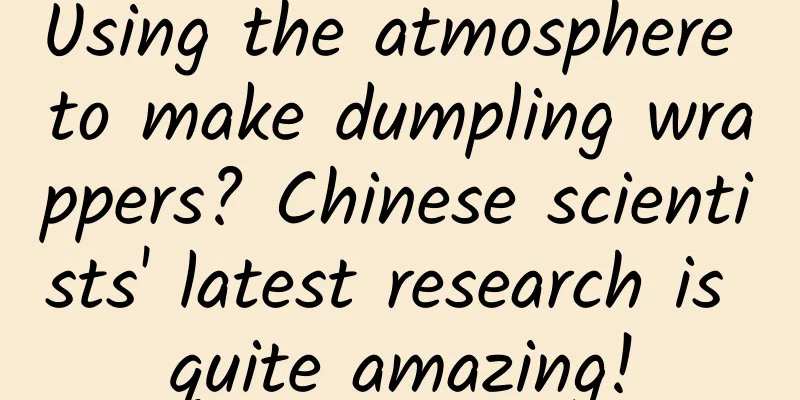It has no "mother" but is praised by the world

|
When we were young, our favorite song was "Only Mom is Good in the World". But one time when I went out to play with my grandfather, I saw a very interesting vine. Driven by curiosity, I asked my grandfather what kind of vine it was. Grandpa said that this is the motherless vine. I naively asked my grandfather at that time, could it be that this vine also popped out from the cracks in the rocks? Isn't it pitiful that it doesn't have a mother? My grandfather laughed and told me that the scientific name of the Cuscuta australis is "Cuscuta chinensis". Since it is a parasitic vine, it is like a child without a mother. When people didn't know how to name it at the beginning, they just gave it the nickname "Cuscuta australis". From a botanical point of view, Cuscuta is an annual parasitic herb of the genus Cuscuta in the family Convolvulaceae. It grows mostly on the edges of fields, roadsides, wastelands, bushes and sunny places on hillsides. Most of them are parasitic on herbs such as Leguminosae, Asteraceae and Chenopodiaceae. The mature fruits can be harvested from September to October, and can be cut together with the host, dried, the seeds removed, and impurities winnowed out before being used as medicine. Cuscuta australis is a commonly used Chinese medicine. According to traditional Chinese medicine, Cuscuta australis tastes pungent and sweet, and is neutral in nature; it enters the liver, kidney, and spleen meridians; it has the effects of nourishing the liver and kidneys, consolidating semen and reducing urine, calming the fetus, improving eyesight, and stopping diarrhea; it is suitable for symptoms such as liver and kidney deficiency, soreness of the waist and knees, impotence and spermatorrhea, enuresis and frequent urination, fetal leakage due to kidney deficiency, fetal movement disorder, blurred vision and tinnitus, and diarrhea due to spleen and kidney deficiency. Cuscuta can also be used externally, which has the effect of eliminating wind and removing spots, and is suitable for diseases such as vitiligo. The general dosage for oral administration is 6 to 12g, and an appropriate amount can be used externally. There are many uses of Cuscuta seeds in clinical practice. I remember that an old Chinese doctor said that Cuscuta seeds are very effective in treating leucorrhea and spermatorrhea, especially for patients with excessive thinking, heart and kidney deficiency, leucorrhea, dreaminess in sleep, and frequent spermatorrhea. You can use 150 grams of Cuscuta seeds, 60 grams of Echeveria seeds, and 90 grams of white Poria cocos, grind them into fine powder together, make them into pills with wine paste, the size of sycamore seeds, and take 9 grams each time on an empty stomach with salt soup. Cuscuta seed can strengthen Yang Qi and is effective for diseases caused by Yang Qi deficiency. The specific usage is to take equal parts of Cuscuta seed and Rehmannia root, grind them into fine powder, make them into pills with wine paste, the size of sycamore seeds, and take 12 grams each time. Cuscuta seeds are very effective in treating diabetes. Generally, you can use an appropriate amount of Cuscuta seeds, add water to boil the juice, and drink it at will. You can also use any amount of dodder seeds, pick them clean, wash them with clean water, soak them in wine for three nights, drain them, and pound them into powder while they are still moist. After drying, grind it into fine powder, mix it with honey and make it into pills as big as sycamore seeds. Take 12 grams before meals, 2 to 3 times a day. It can also be ground into powder and made into a powder, taking 9 grams each time. The tonic effect of Cuscuta australis is relatively strong, but there are some situations in which it cannot be used. For example, Depei Materia Medica states that six people should not use Cuscuta australis, including those suffering from uterine bleeding, impotence, constipation, fire in the kidneys, and yin deficiency and fire movement. Bencao Jingshu also points out that people with "hard and dry stools" should not use it. |
<<: A "stick" can completely solve men's back pain
>>: This potted plant that many families have on their balconies can actually cure liver disease
Recommend
A curious question for the Year of the Snake! Will the lively New Year wake up hibernating snakes?
Review expert: Wang Lei, National Park and Nature...
A 23-year-old woman suffered kidney poisoning after applying a whitening facial mask. How to determine whether there is mercury in cosmetics?
Audit expert: Zhang Yuhong Chief Physician of the...
The baby's forehead suddenly turned white
https://static.cndzys.com/20161017/8728c686a6a9b78...
The efficacy and function of ginkgo bark
With the development of society and the close int...
The efficacy and function of Tianlip Wufei Wing
Nowadays, our living standards are constantly imp...
The efficacy and function of blue grass
In our lives, indigo grass has attracted our atte...
What is the function of the earth ring?
Ground ring is a kind of plant medicinal material...
In order to cope with the cruel nature, "non-Buddhist frogs" choose such a strange lifestyle
Lying-flat youth, Buddhist youth, and emo youth a...
The efficacy and function of shark fin
Shark fin is a very nutritious and precious medic...
The efficacy and function of bay leaves
Health preservation is very important for modern ...
Is life span closely related to drinking? A survey of 11,558 drinkers finally revealed the answer
During holidays, it is not uncommon to hear news ...
The efficacy and function of Blowing Powder
Chuifengsan is one of the common traditional Chin...
The dragon raising its head is a celestial phenomenon. Do you know its relationship with the Chinese totem?
Dragon Raising its Head refers to the phenomenon ...
20 years of "loyalty"! He and the Qinghai-Tibet Plateau "breathe together"
Wang Xiaodan (first from right) and his team memb...
March into the deep sea and strive for maritime strength! Happy birthday, People's Navy!
today It is the birthday of the People's Navy...









